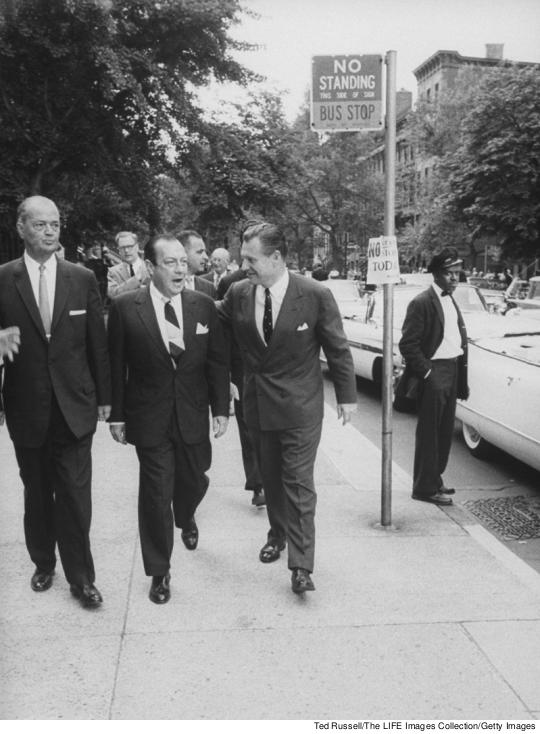The ongoing financing and governance of the City University of New York system have been much in the news lately, thanks to Governor Andrew Cuomo. On December 15 of last year, the governor vetoed the maintenance-of-effort (MOE) bill, which had been overwhelmingly approved by both houses of the state legislature. The MOE bill would have committed the state to provide level funding for CUNY and the State University of New York in the coming years. The governor vetoed the bill despite a 15 percent rise in tuition fees and a decline of 3 percent in state investment per student during the five years he has been in office.
 |
Disinvestment in CUNY — and, more generally, public higher education in New York State — has marked Governor Cuomo’s higher-education policymaking. That policymaking appeared to take a dramatic turn on January 13, when the governor’s Executive Budget message for the 2017 fiscal year called for a major realignment of funding for CUNY’s senior colleges. Cuomo proposed that the city assume $485 million of the $1.2 billion annual operating budget for CUNY’s senior colleges.
World-class higher dd
The governor justified this substantial state budget cut by indicating that the state’s original assumption of responsibility for CUNY’s senior college budget was essentially a response to the city’s 1976 fiscal crisis. The time for such subsidies has passed, the message suggested, as the city is now awash in money. An alternative explanation for Cuomo’s announced desire to transform the state’s responsibility for CUNY surfaced on January 17, when the New York Post quoted anonymous “high ranking” political sources as saying that Cuomo’s ultimate plan was a “dismantling” of CUNY and its merger into SUNY.
In the days that followed, the governor walked back his demand for a $485 million cut to state funding for CUNY, saying that he and New York City Mayor Bill de Blasio would be discussing CUNY’s funding. In the meantime, the governor’s executive budget also included a line item of $240 million for payment of retroactive, collectively bargained salary increases at CUNY.
Whatever the governor’s ultimate intentions toward CUNY, an examination of the historical record reveals a very different, more complicated picture of the origins of the fiscal and governance relationships between the state and city with regard to CUNY. New York City’s municipal college system originally consisted of four senior colleges (City College of New York, Hunter, Brooklyn, and Queens, the first two founded in the 19th century, the latter two in the 1930s), governed, after 1926, by the city’s Board of Higher Education. These four senior colleges were built and subsidized largely, though not entirely, by the taxpayers of the city, with full-time, matriculating day students paying no tuition to attend. This unique municipal college system would confront enormous pressures to expand, however, first with the dramatic post-World War II surge in demand for higher education (driven forward by the GI Bill and the baby boom) and then with the election in 1958 of Nelson A. Rockefeller as governor.
Rockefeller believed that New York State needed a world-class public higher education system to rival the one that was emerging in California. He therefore expanded what was at the time, a tiny State University of New York (SUNY) system, founded in 1948. He quickly built dozens of new SUNY campuses across the state, which ultimately made SUNY the largest public university system in the country. SUNY’s expansion also raised important questions about how the city’s existing and much admired municipal colleges might also be expanded. The municipal colleges were increasingly unable in this period to meet the demand for college degrees by city residents, many of whom were poor and working-class students of color. Finally, Rockefeller and state legislators had to decide if the state and city higher education systems should be integrated.
Through a complex series of negotiations, Rockefeller and the state legislature agreed to let the municipal colleges take on an independent and expanded role to help the state realize its larger, higher-education mission. Rockefeller signed a state law in 1961 that formed the City University of New York. Hailing CUNY as “a comprehensive public university structure in the city,” Rockefeller, working with state legislators, agreed that year to make a substantial state contribution to CUNY’s growth, providing one-third of the costs for freshmen and sophomores attending CUNY’s four senior colleges, plus one-half of CUNY’s debt service costs for capital construction.
CUNY’s expansion
According to the records of the CUNY Board of Higher Education, New York State increased its annual contribution to CUNY’s operating budget from about one-third of the total costs in 1961 to approximately 45 percent by the time Rockefeller left office in 1974. That contribution, along with the creation of the City University Construction Fund in 1964, allowed CUNY to build a dozen new senior and community colleges across the five boroughs and expand to nearly a quarter-million undergraduates by the early 1970s.
State support for CUNY and SUNY
New York State’s commitment to help fund CUNY obviously expanded significantly in 1976 when Governor Hugh Carey agreed to underwrite CUNY’s senior college budget with state funds. But the state’s major support of CUNY’s operating budget clearly predated the fiscal crisis. Governor Cuomo’s assertion that the state’s contribution to CUNY should now be reconsidered because of the city’s shifting fiscal fortunes undermines the basic rationale for the state’s longstanding commitment to provide funding for both SUNY and CUNY, the twin pillars of the state’s public university system.
Do we really need to remind Governor Cuomo that New York City residents also pay state taxes and that CUNY’s senior colleges are as entitled to major ongoing state support as any of SUNY’s various senior college campuses across the state? New York State and New York City must continue to provide CUNY with the necessary operating funds to meet the needs of poor and working-class city residents, whose future success depends on their access to affordable, publicly supported and quality higher education.
_______________________________________
Stephen Brier is a historian and professor in the Urban Education PhD program at the CUNY Graduate Center. He is co-author with Michael Fabricant of the forthcoming book, Austerity Blues: Fighting for the Soul of Public Higher Education (John Hopkins University Press, 2016).

